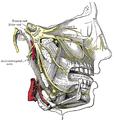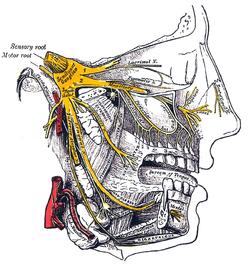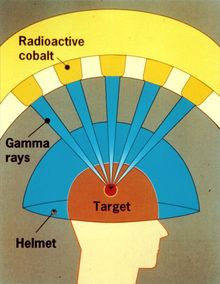- Written by Muthukumaran ECE
- Hits: 3927
Trigeminal neuralgia
Trigeminal neuralgia (TN), tic douloureux (also known as prosopalgia, the Suicide Disease or Fothergill’s disease) is a neuropathic disorder characterized by episodes of intense pain in the face, originating from the trigeminal nerve. One, two, or all three branches of the nerve may be affected.
It is, "one of the most painful conditions known to humans, yet remains an enigma to many health professionals."This pain may be felt in the ear, eye, lips, nose, scalp, forehead, cheeks, teeth, and/or jaw and side of the face; some patients also experience pain in their left index finger.Trigeminal neuralgia (TN) is not easily controlled and there is no cure.It is estimated that 1 in 15,000 people suffer from trigeminal neuralgia, although the actual figure may be significantly higher due to frequent misdiagnosis. In a majority of cases, TN symptoms begin appearing after the age of 50, although there have been cases with patients being as young as three years of age. It is more common in females than males.
Signs and symptoms
The disorder is characterized by episodes of intense facial pain that last from a few seconds to several minutes or hours. The episodes of intense pain may occur paroxysmally. To describe the pain sensation, patients may describe a trigger area on the face so sensitive that touching or even air currents can trigger an episode; however, in many patients the pain is generated spontaneously without any apparent stimulation. It affects lifestyle as it can be triggered by common activities such as eating, talking, shaving and brushing teeth. Wind, high pitched sounds, loud noises such as concerts or crowds, chewing, and talking can aggravate the condition in many patients. The attacks are said by those affected to feel like stabbing electric shocks, burning, pressing, crushing, exploding or shooting pain that becomes intractable.
Cause
The trigeminal nerve is the fifth cranial nerve, a mixed cranial nerve responsible for sensory data such as tactition (pressure), thermoception (temperature), and nociception (pain) originating from the face above the jawline; it is also responsible for the motor function of the muscles of mastication, the muscles involved in chewing but not facial expression.
Treatment
1. Medications
2. Surgery
3. Stereotactic radiation therapy
Notable cases
Australian author Colleen McCullough has trigeminal neuralgia and has undergone surgical treatment in Jan 2010.[27]
High profile entrepreneur and author Melissa Seymour was diagnosed with Trigeminal Neuralgia in 2009 and underwent Microvascular Decompression Surgery in a well documented case covered by magazines and newspapers which helped to raise public awareness of the illness in Australia. Seymour was subsequently made a Patron of the Trigeminal Neuralgia Association of Australia
Trigeminal nerve
Trigeminal nerve, shown in yellow
The trigeminal nerve (the fifth cranial nerve, also called the fifth nerve, or simply CNV or CN5) is responsible for sensation in the face. Sensory information from the face and body is processed by parallel pathways in the central nervous system.
The fifth nerve is primarily a sensory nerve, but it also has certain motor functions (biting, chewing, and swallowing).






